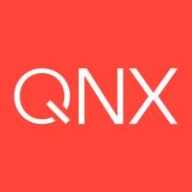

CentOS and QNX Neutrino serve different markets; while CentOS is popular in server environments, QNX Neutrino targets real-time operating systems. QNX Neutrino appears to have an advantage in real-time performance and specialized features, although CentOS is favored for its pricing and community support.
Features: CentOS offers a robust open-source framework, extensive community support, and compatibility with various server applications, ensuring stability for long-term use and access to a wide software repository. QNX Neutrino is known for real-time capabilities, determinism, and fault tolerance, making it ideal for embedded systems. The main difference is CentOS's flexibility in general server applications, while QNX Neutrino focuses on real-time operations.
Ease of Deployment and Customer Service: CentOS is easily deployed with extensive documentation and community resources, catering to diverse server setups. QNX Neutrino demands specific configuration due to its specialized nature yet offers strong customer service tailored to technical integrations in real-time applications. CentOS is more straightforward in deployment, whereas QNX Neutrino excels in customer service for niche requirements.
Pricing and ROI: CentOS has a zero-cost setup, providing excellent ROI with its open-source nature, ideal for cost-conscious deployments seeking community backing. QNX Neutrino, albeit pricier due to licensing, yields ROI through superior performance in critical systems. The key distinction is CentOS’s cost-effectiveness, contrasted with QNX Neutrino's high value in specialized contexts.

CentOS offers a stable, secure, and compatible environment with Red Hat packages, providing robust performance and cost efficiency. Its lightweight, scalable design and strong community support make it ideal for handling heavy workloads with limited resources.
CentOS is a popular choice for organizations seeking reliable server and virtualization solutions. Known for its robust stability and security, it offers seamless integration and maintenance. However, after a shift from Red Hat, some challenges emerged, including weak NFS client performance and a more complex interface, which beginners find challenging alongside insufficient documentation. Despite these, CentOS remains a favored option for deploying web applications, server installations, and supporting cloud solutions, thanks to its efficient use in monitoring, databases, and telecommunications.
What are CentOS's key features?CentOS is widely used in industries requiring robust infrastructure, such as web hosting, scientific computing, and telecommunications. In data centers, companies deploy it to support virtual environments, testing, and development. The OS powers business applications, email servers, and cloud solutions, offering a cost-effective alternative to Red Hat.
QNX Neutrino, a real-time operating system from BlackBerry, delivers robust performance for embedded systems across industries like automotive, aerospace, and telecommunications.
QNX Neutrino is designed for high-performance embedded applications, providing deterministic responses that are essential in systems where timing is critical. Its microkernel architecture ensures maximum security and reliability, making it a trusted choice for developing safety-critical applications. QNX Neutrino's ability to support multitasking and asymmetrical processing adds flexibility, supporting resource utilization across different hardware environments.
What are the key features of QNX Neutrino?
What benefits should users look for in reviews?
In industries like automotive, QNX Neutrino powers complex systems such as Advanced Driver Assistance Systems, ensuring real-time data processing for enhanced safety. In aerospace, it supports flight control systems where reliability and timing precision are crucial. Telecommunications benefit from its scalability and fault resilience, enabling robust network infrastructure.
We monitor all Operating Systems (OS) for Business reviews to prevent fraudulent reviews and keep review quality high. We do not post reviews by company employees or direct competitors. We validate each review for authenticity via cross-reference with LinkedIn, and personal follow-up with the reviewer when necessary.